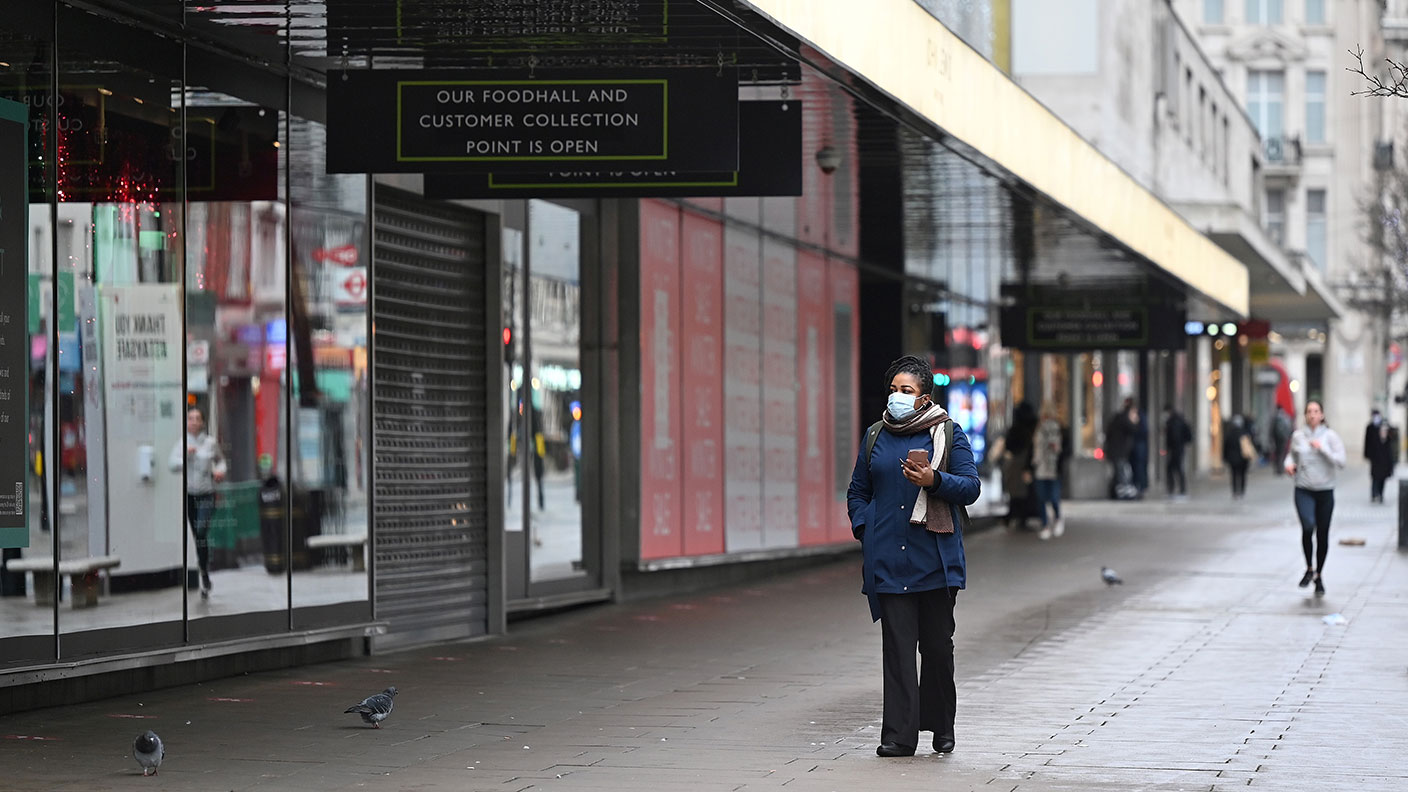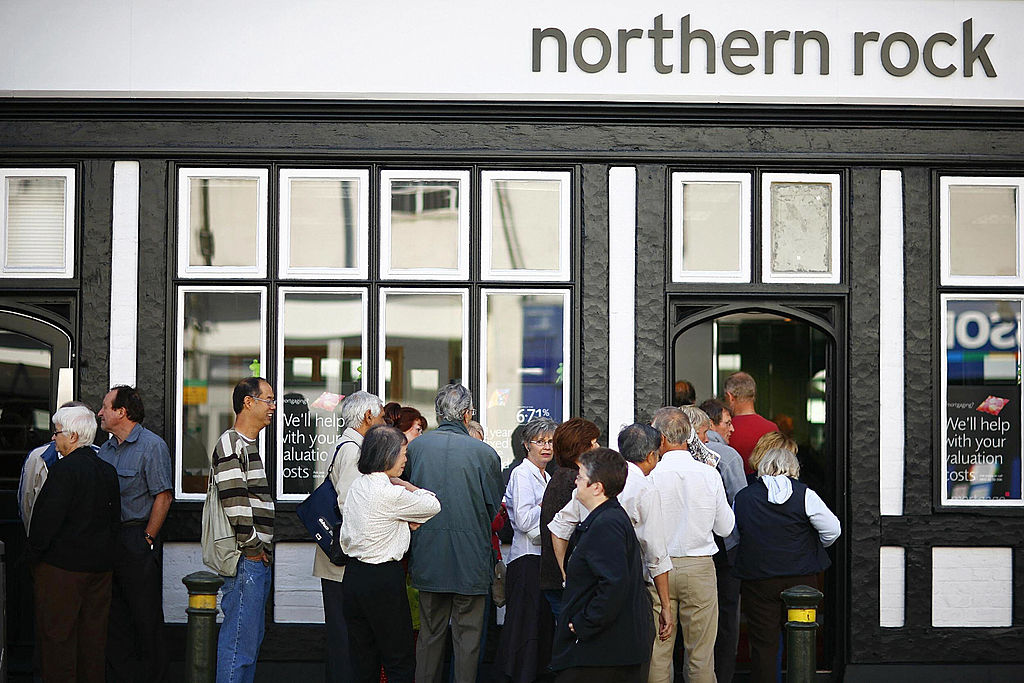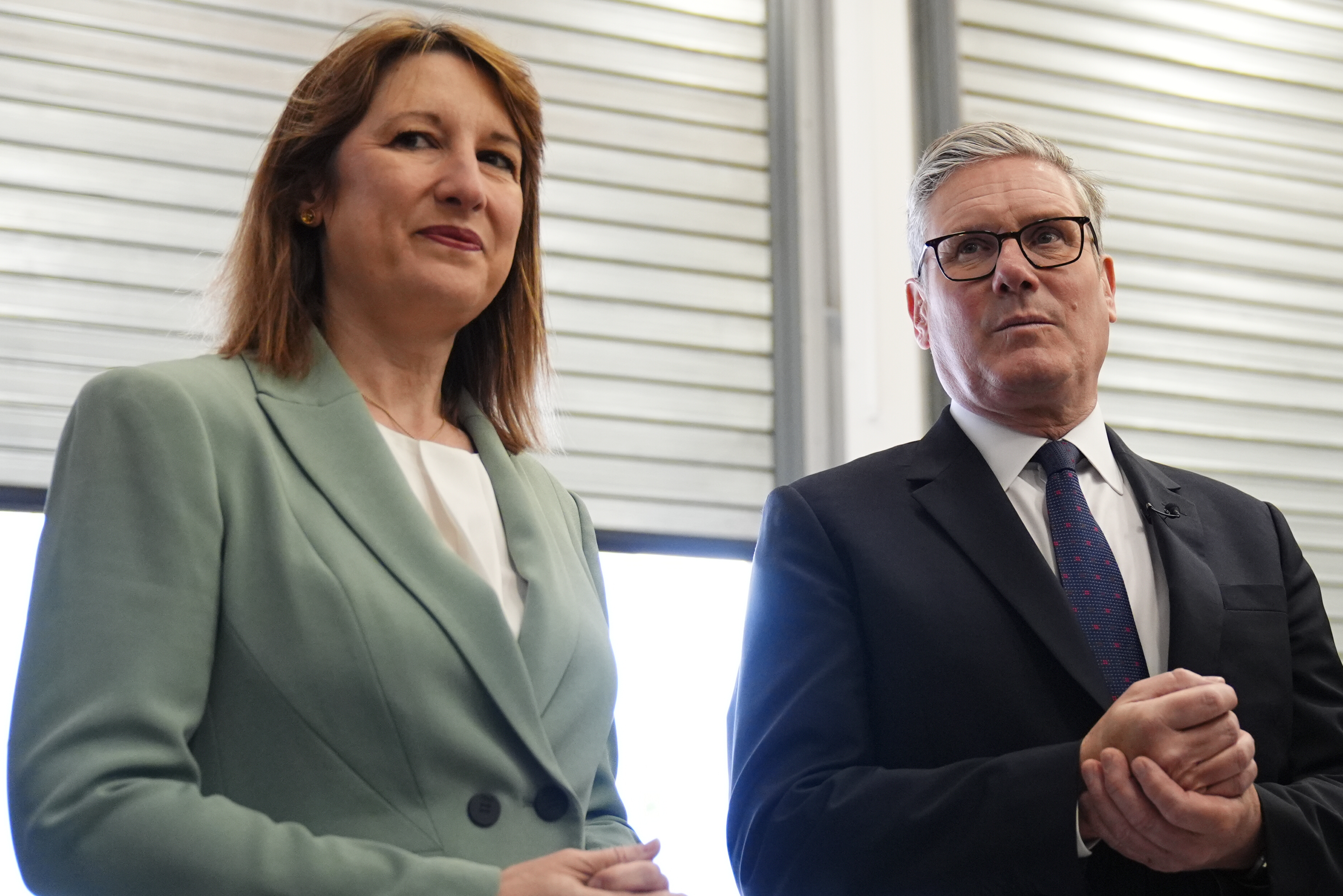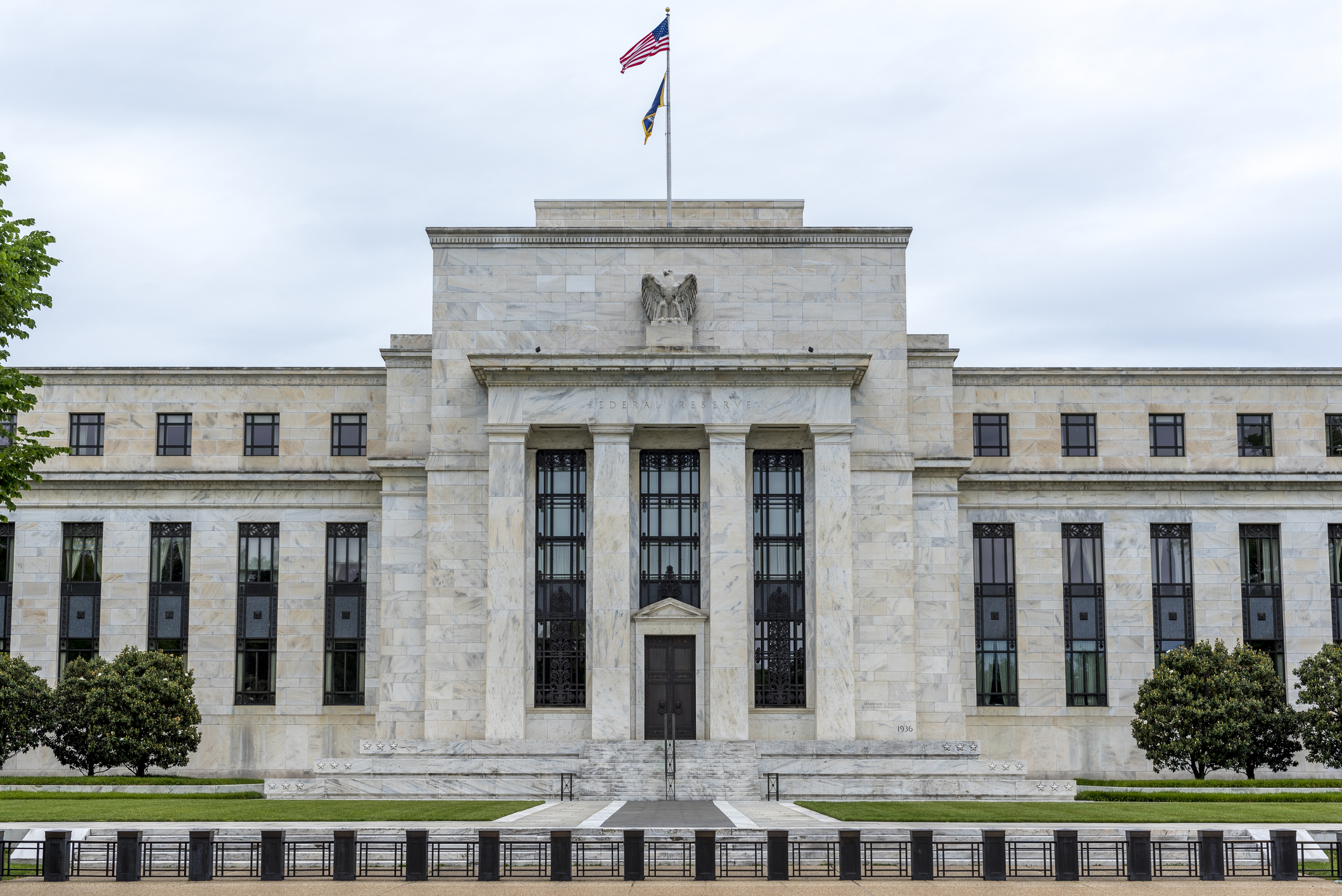When lockdown ends, be prepared for an inflationary surprise
The government is pouring more money into the economy to tide businesses over the latest lockdown. Once lockdown ends, says John Stepek,we should see a significant bounceback in demand – and in inflation.


In summer last year, as Covid-19 eased off for a bit, chancellor Rishi Sunak was beginning to drop hints about tightening the purse strings again. Or at least, suggesting that he was considering how he’d go about slowing the growth in Britain’s debt pile, rather than adding to it at a rate of knots.
That was a little premature, of course. By the end of 2020, the furlough scheme had already been extended significantly. And now that we’re all in an even tighter lockdown once again, there’s really only one option for the Treasury – to chip in even more assistance to the businesses and industries that will be forced to shut down.
Businesses in the hardest-hit sectors will now be eligible for one-off grants of up to £9,000, the chancellor announced this morning. The size of the grant depends on the rateable value of the business – £4,000 for those with a rateable value of below £15,000; £6,000 for up to £51,000; and £9,000 for those above £51,000.
MoneyWeek
Subscribe to MoneyWeek today and get your first six magazine issues absolutely FREE

Sign up to Money Morning
Don't miss the latest investment and personal finances news, market analysis, plus money-saving tips with our free twice-daily newsletter
Don't miss the latest investment and personal finances news, market analysis, plus money-saving tips with our free twice-daily newsletter
The Treasury reckons about 600,000 businesses in retail, leisure and hospitality will be eligible. The aim is to tide businesses over until at least the start of March, which is when the next Budget is scheduled to take place. That’s likely to contain a more detailed plan for longer-term support and recovery.
That’ll be useful because while the various bits of money being thrown at struggling businesses no doubt help, it doesn’t make it easy to plan for the future – if indeed there is one for many of these firms. Business shut down, emergency support, the threat of recession – these are all things we’d normally associate with a disinflationary shock. But these aren’t normal times.
From a broader economic perspective, the decision to carry on with essentially no-questions-asked direct assistance for businesses puts all the late summer, early autumn concerns about “austerity” into perspective. The government can’t and won’t put the brakes on for some time yet.
According to a survey in the Financial Times today, investors already believe that the Bank of England is using quantitative easing (QE – printing money to buy government bonds) to keep government borrowing costs down. In other words, the Bank is printing money for the government to spend.
The Bank might deny that (the official line is that QE is designed to help keep inflation close to the 2% target) but it’s pretty clear that this is all semantics. The Bank of England magics up money. It conveniently buys gilts at a time when the government is issuing lots of them. The government then gives the money to crisis-hit businesses. Whether those businesses survive or not is beside the point in macroeconomic terms. Money that did not previously exist has gone into the economy.
This is what makes the current version of QE so different from the post-2008 central bank activity. The process itself isn’t any different. The important difference is that the money isn’t sitting with bankrupt commercial banks. It’s being handed out by the government.
So that’s inflationary, however you look at it. Then on top of that, it’s also worth noting that consumers are still keen to shop from companies that are able to meet their demands. In other words, we don’t have a deflationary demand shock because consumers still want to spend and still have the resources to do so.
A Christmas trading update from high street clothes chain Next showed that sales in the nine weeks to Boxing Day were just 1.1% down on 2019. The company (admittedly well-known for managing expectations lower, then beating them) had pencilled in an 8% drop, notes The Guardian. The collapse in offline sales was largely compensated for by a jump in online sales.
Also worth noting is the pandemic’s impact on stock levels – Next chief executive Simon Wolfson pointed out that deliveries from the far east are running late, with stock set to return to normal “by the end of March”.
If Next is struggling with stock, you can be sure that other chains are too. Supply chain disruption adds to costs. Will those costs be passed onto consumers? At a time when domestic savings are high (on average), and the propensity to spend on available outlets is apparently still pretty solid, it would be very surprising if businesses didn’t at least try.
In short – after 2008, money printing did nothing because the banks were bust, and consumers were too (partly as a result of the banks being bust). This time, consumers haven’t been anywhere near as hard hit, the banks are fine, and in many cases they’re either being directed to lend by the government (bounceback loans) or bypassed altogether (grants).
This is not a recipe for deflation. Once lockdown ends (and it will, at some point), this remains a recipe for a significant bounceback in demand - and in inflation.
Get the latest financial news, insights and expert analysis from our award-winning MoneyWeek team, to help you understand what really matters when it comes to your finances.
John Stepek is a senior reporter at Bloomberg News and a former editor of MoneyWeek magazine. He graduated from Strathclyde University with a degree in psychology in 1996 and has always been fascinated by the gap between the way the market works in theory and the way it works in practice, and by how our deep-rooted instincts work against our best interests as investors.
He started out in journalism by writing articles about the specific business challenges facing family firms. In 2003, he took a job on the finance desk of Teletext, where he spent two years covering the markets and breaking financial news.
His work has been published in Families in Business, Shares magazine, Spear's Magazine, The Sunday Times, and The Spectator among others. He has also appeared as an expert commentator on BBC Radio 4's Today programme, BBC Radio Scotland, Newsnight, Daily Politics and Bloomberg. His first book, on contrarian investing, The Sceptical Investor, was released in March 2019. You can follow John on Twitter at @john_stepek.
-
 The shape of yields to come
The shape of yields to comeCentral banks are likely to buy up short-term bonds to keep debt costs down for governments
-
 The sad decline of investment clubs – and what comes next
The sad decline of investment clubs – and what comes nextOpinion Financial regulation and rising costs are killing off investment clubs that once used to be an enjoyable hobby, says David Prosser
-
 Why Scotland's proposed government bonds are a terrible investment
Why Scotland's proposed government bonds are a terrible investmentOpinion Politicians in Scotland pushing for “kilts” think it will strengthen the case for independence and boost financial credibility. It's more likely to backfire
-
 How have central banks evolved in the last century – and are they still fit for purpose?
How have central banks evolved in the last century – and are they still fit for purpose?The rise to power and dominance of the central banks has been a key theme in MoneyWeek in its 25 years. Has their rule been benign?
-
 UK to have highest inflation among advanced economies this year and next, says IMF
UK to have highest inflation among advanced economies this year and next, says IMFThe International Monetary Fund (IMF) says it expects inflation to remain high in the UK, while lowering economic growth forecasts for 2026.
-
 Is Britain heading for a big debt crisis?
Is Britain heading for a big debt crisis?Opinion Things are not yet as bad as some reports have claimed. But they sure aren’t rosy either, says Julian Jessop
-
 'Britain is on the road to nowhere under Labour'
'Britain is on the road to nowhere under Labour'Opinion Britain's economy will shake off its torpor and grow robustly, but not under Keir Starmer's leadership, says Max King
-
 'Governments are launching an assault on the independence of central banks'
'Governments are launching an assault on the independence of central banks'Opinion Say goodbye to the era of central bank orthodoxy and hello to the new era of central bank dependency, says Jeremy McKeown
-
 Why investors can no longer trust traditional statistical indicators
Why investors can no longer trust traditional statistical indicatorsOpinion The statistical indicators and data investors have relied on for decades are no longer fit for purpose. It's time to move on, says Helen Thomas
-
 What's behind the big shift in Japanese government bonds?
What's behind the big shift in Japanese government bonds?Rising long-term Japanese government bond yields point to growing nervousness about the future – and not just inflation
